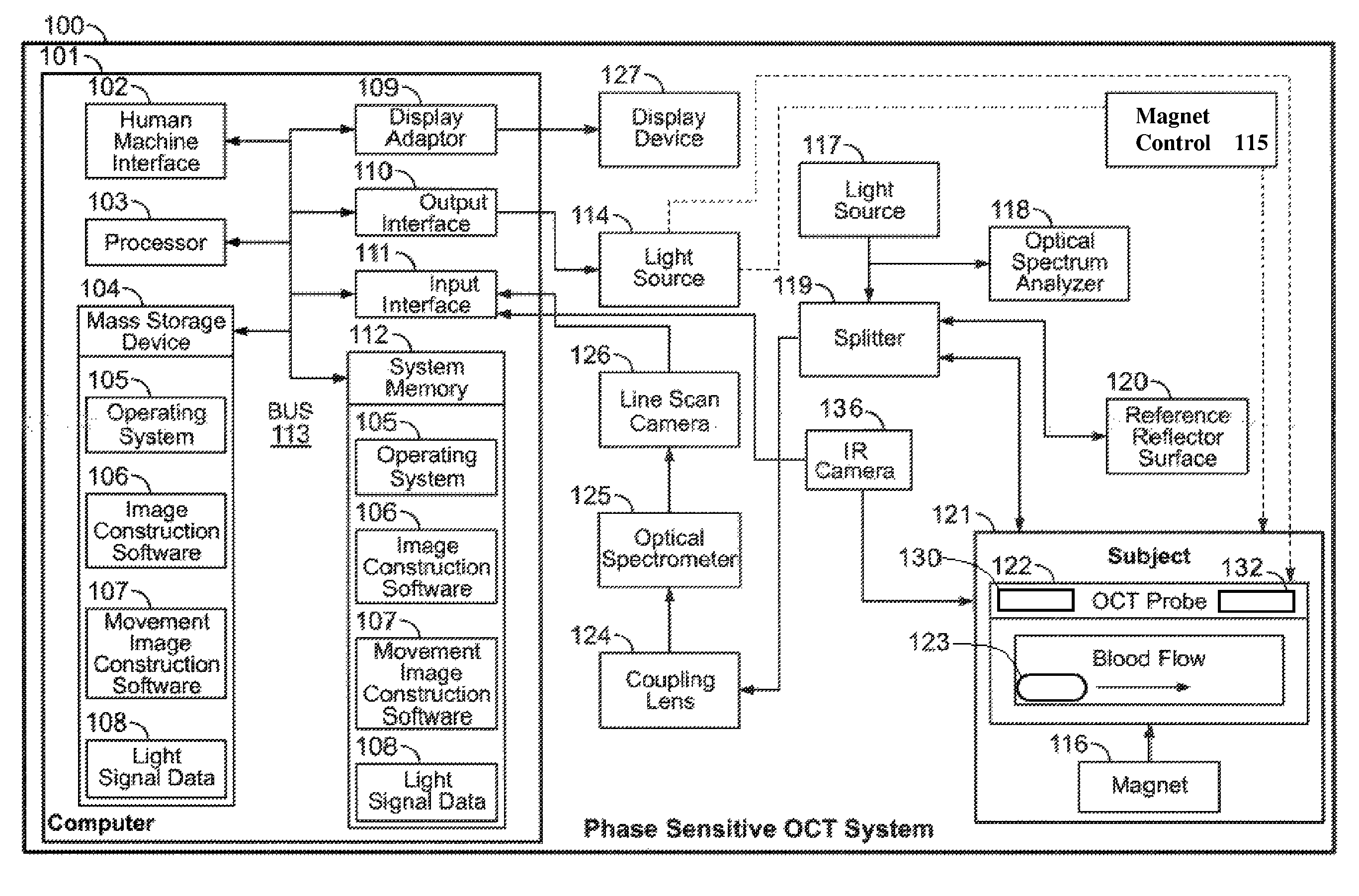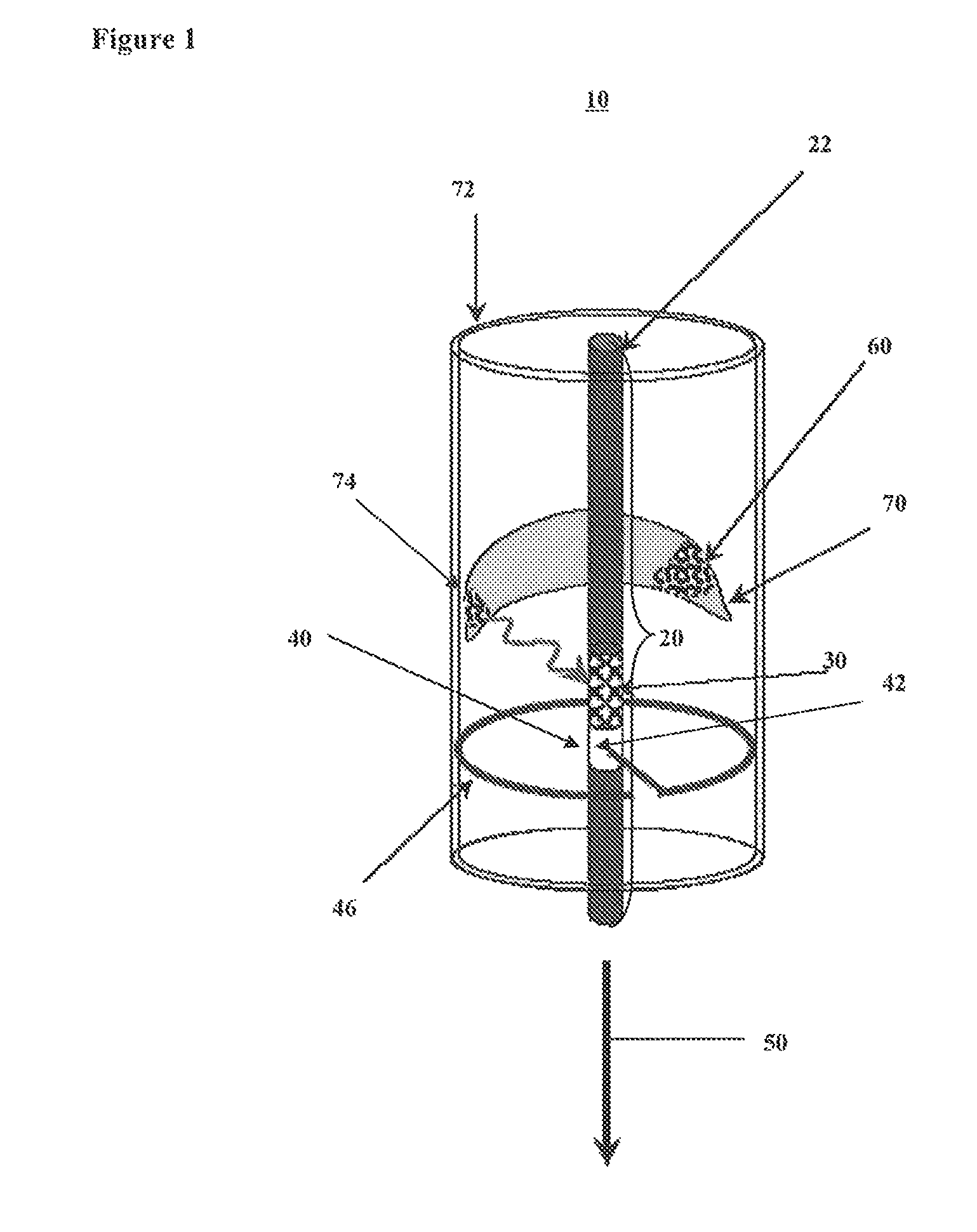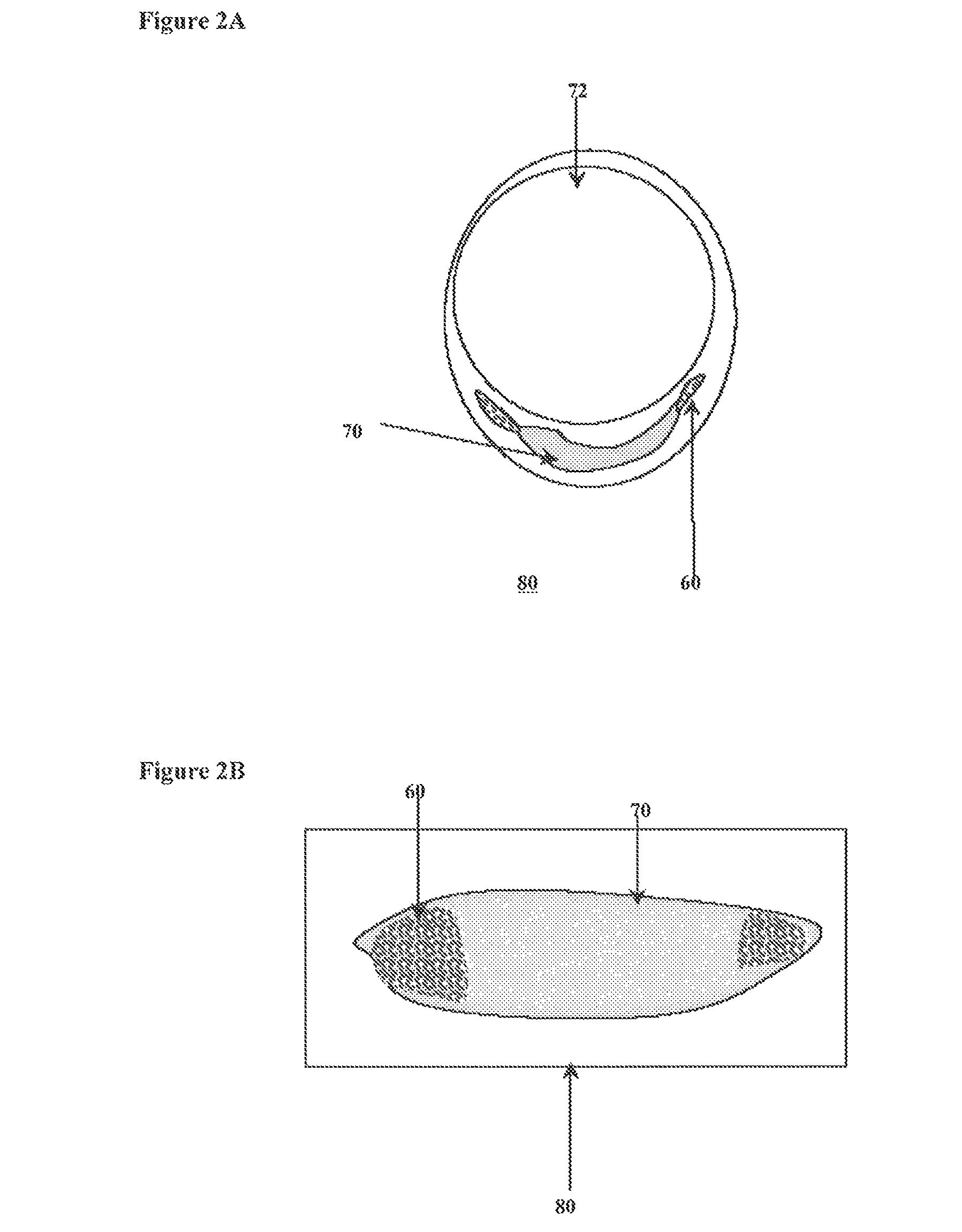Method and apparatus to identify vulnerable plaques with thermal wave imaging of heated nanoparticles
a technology of nanoparticles and thermal wave imaging, applied in the field of thermal wave imaging, can solve the problems of blood clot formation, serious health risks, and restricted blood flow
- Summary
- Abstract
- Description
- Claims
- Application Information
AI Technical Summary
Benefits of technology
Problems solved by technology
Method used
Image
Examples
example 1
Thermal Wave Generation of Nanoparticles in an Elastic Medium
[0143]An expression for one-dimensional thermal wave signals in response to modulated laser irradiation in a test material is derived. The test material is composed of plain heat sources in a superficial layer, and background heat sources with a temperature increase that decays exponentially in depth (z) was assumed. Superparamagnetic iron oxide nanoparticles (“SPION”) were regarded as plain heat sources in a superficial layer and homogeneous distribution of SPION was assumed. An insulating boundary condition (Q(heat flux)=−kdΔT / dz=0) at surface (z=0) in a semiinfinite half-space was assumed. Heat loss due to free convection at the airmaterial boundary was neglected. Thermal Green's function with insulating boundary condition (GdT / dz=0) is
[0144]GdT / dz=0=G(z-z0,t)+G(z+z0,t)=12πDtexp(-(z-z0)2+(z+z0)24Dt)(1.1)
[0145]Here zo is depth of a superficial plane heat source, D is thermal diffusivity, and t is time. One-dimen...
example 2
Watanabe Heritable Hyperlipidemic (WHHL) Rabbit Artery
[0159]Twenty pulses of 532 nm laser light (Fluence rate=1.9-5.7 W / cm2, power: 300-400 mW, pulse duration: 50 ms, spot diameter: 3-4.5 mm) irradiated Watanabe Heritable Hyperlipidemic (“WHHL”) rabbit arteries (inner surface of artery wall) during 2 seconds with 10 Hz modulation frequency. Temperature change in response to laser irradiation was measured by an infrared focal plane array (IR-FPA) camera. The IR emission from the irradiated area (7-16 mm2) was imaged (Area: 1.5×1.5 cm2) with a spatial resolution of 60 μm per pixel. Calibration of IR emission was conducted to obtain temperature change assuming a unit emissivity of the rabbit arteries. Maximum temperature increase within the irradiated artery surface was measured. MION (2.96 cc)-injected WHHL rabbit arteries were compared with control WHHL rabbit arteries in terms of maximum temperature increase during 2-second modulated laser irradiation.
[0160]MION in macrophages of WH...
example 3
Thermal Wave Radiometric Imaging: Comparison of Experiments and Theory
[0167]Analytical solutions for magnitude and phase of a thermal wave were derived (Equations 1.8 and 1.9). Measured thermal wave is a sum of thermal waves from nanoparticles and background absorbers. The effect of nanoparticle concentration on magnitude and phase of a total thermal wave was investigated by the derived analytical solutions. In analytical solutions, the surface temperature increase of a nanoparticle layer was varied in comparison to that of background absorbers. The ratio (=ΔTo-np / ΔTo-BK) between nanoparticle and background surface temperature increase was varied from 0.01 to 0.15 (0.01, 0.05, 0.1 and 0.15). At a specific modulation frequency of pulsed laser irradiation, as surface temperature of a nanoparticle layer increases, magnitude of a total thermal wave increases, however, phase decreases.
[0168]Phase of the thermal wave image was more sensitive to change in nanoparticle concentration than ma...
PUM
 Login to View More
Login to View More Abstract
Description
Claims
Application Information
 Login to View More
Login to View More - R&D
- Intellectual Property
- Life Sciences
- Materials
- Tech Scout
- Unparalleled Data Quality
- Higher Quality Content
- 60% Fewer Hallucinations
Browse by: Latest US Patents, China's latest patents, Technical Efficacy Thesaurus, Application Domain, Technology Topic, Popular Technical Reports.
© 2025 PatSnap. All rights reserved.Legal|Privacy policy|Modern Slavery Act Transparency Statement|Sitemap|About US| Contact US: help@patsnap.com



